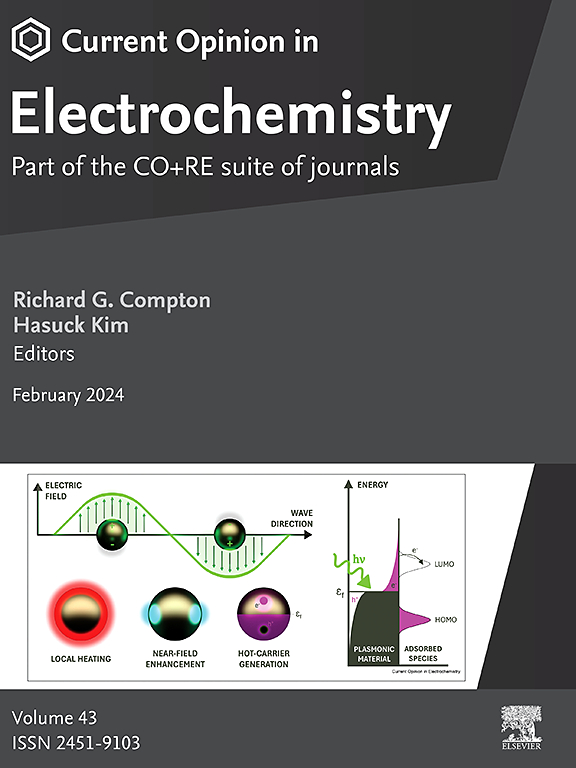Time: The potentially powerful, often-overlooked variable in electrochemical sensing of per- and polyfluoroalkyl substances
IF 6.9
2区 化学
Q1 CHEMISTRY, PHYSICAL
引用次数: 0
Abstract
Modern electrochemistry places a heavy emphasis on the importance of thermodynamic measurements for environmental sensing. While most electrochemical sensors require some type of binding mechanism, analytes do not bind to sensors instantaneously; the binding process takes time, suggesting that we must examine reaction kinetics as well. With emerging environmental pollutants of concern, such as per- and polyfluoroalkyl substances (PFAS), electrochemists must consider the kinetic relationship between the electrochemical sensor and the analyte. Various types of environmental electrochemical sensors, such as enzymes, antibodies, aptamers, and molecularly imprinted polymers (MIPs), exist. Each type of sensor can be used in the environment, but MIPs have recently demonstrated strong potential to qualitatively and quantitatively detect and identify PFAS species at the earliest onset of environmental contamination. Additionally, the mathematical and experimental approaches to MIP binding have room to expand beyond the thermodynamic isotherm models and into a time-dependent kinetic model.
时间:全氟烷基和多氟烷基物质电化学传感中潜在的强大的、经常被忽视的变量
现代电化学非常重视热力学测量对环境传感的重要性。虽然大多数电化学传感器需要某种类型的结合机制,但分析物不会立即与传感器结合;结合过程需要时间,这表明我们也必须研究反应动力学。随着新出现的环境污染物,如全氟烷基和多氟烷基物质(PFAS)的关注,电化学化学家必须考虑电化学传感器和分析物之间的动力学关系。存在各种类型的环境电化学传感器,如酶、抗体、适体和分子印迹聚合物(MIPs)。每种类型的传感器都可以在环境中使用,但MIPs最近显示出在环境污染最早开始时定性和定量检测和识别PFAS物种的强大潜力。此外,MIP结合的数学和实验方法有空间扩展到热力学等温线模型和时间相关的动力学模型。
本文章由计算机程序翻译,如有差异,请以英文原文为准。
求助全文
约1分钟内获得全文
求助全文
来源期刊

Current Opinion in Electrochemistry
Chemistry-Analytical Chemistry
CiteScore
14.00
自引率
5.90%
发文量
272
审稿时长
73 days
期刊介绍:
The development of the Current Opinion journals stemmed from the acknowledgment of the growing challenge for specialists to stay abreast of the expanding volume of information within their field. In Current Opinion in Electrochemistry, they help the reader by providing in a systematic manner:
1.The views of experts on current advances in electrochemistry in a clear and readable form.
2.Evaluations of the most interesting papers, annotated by experts, from the great wealth of original publications.
In the realm of electrochemistry, the subject is divided into 12 themed sections, with each section undergoing an annual review cycle:
• Bioelectrochemistry • Electrocatalysis • Electrochemical Materials and Engineering • Energy Storage: Batteries and Supercapacitors • Energy Transformation • Environmental Electrochemistry • Fundamental & Theoretical Electrochemistry • Innovative Methods in Electrochemistry • Organic & Molecular Electrochemistry • Physical & Nano-Electrochemistry • Sensors & Bio-sensors •
 求助内容:
求助内容: 应助结果提醒方式:
应助结果提醒方式:


